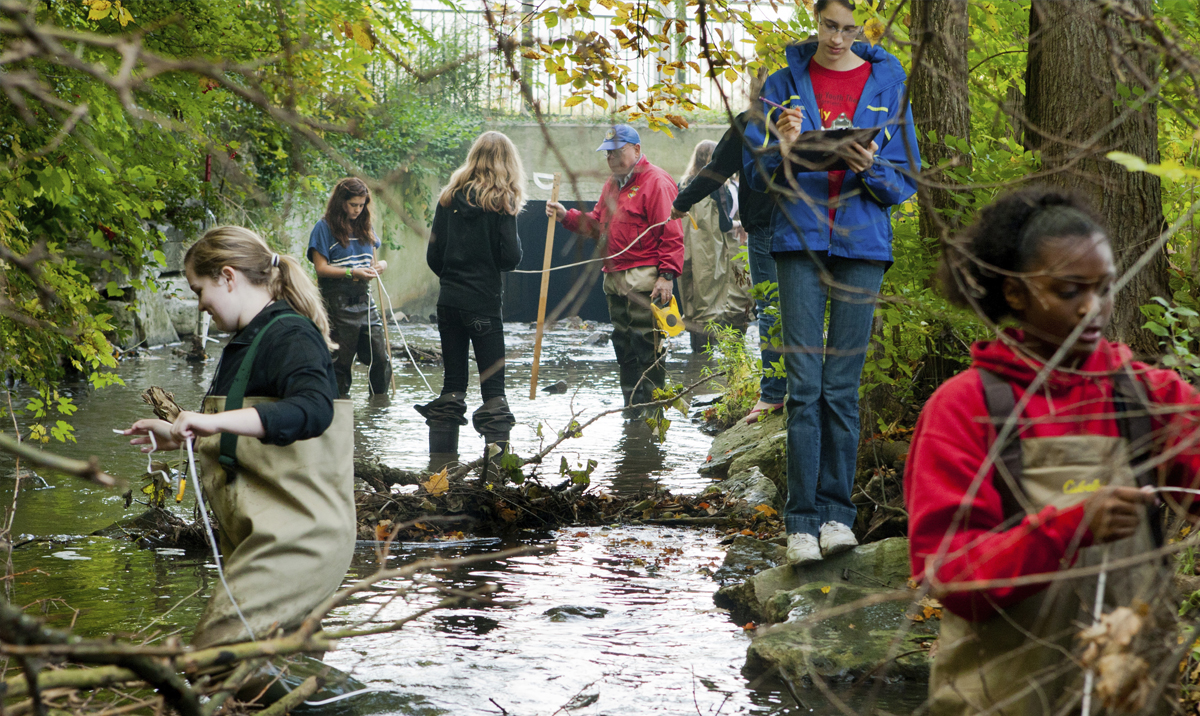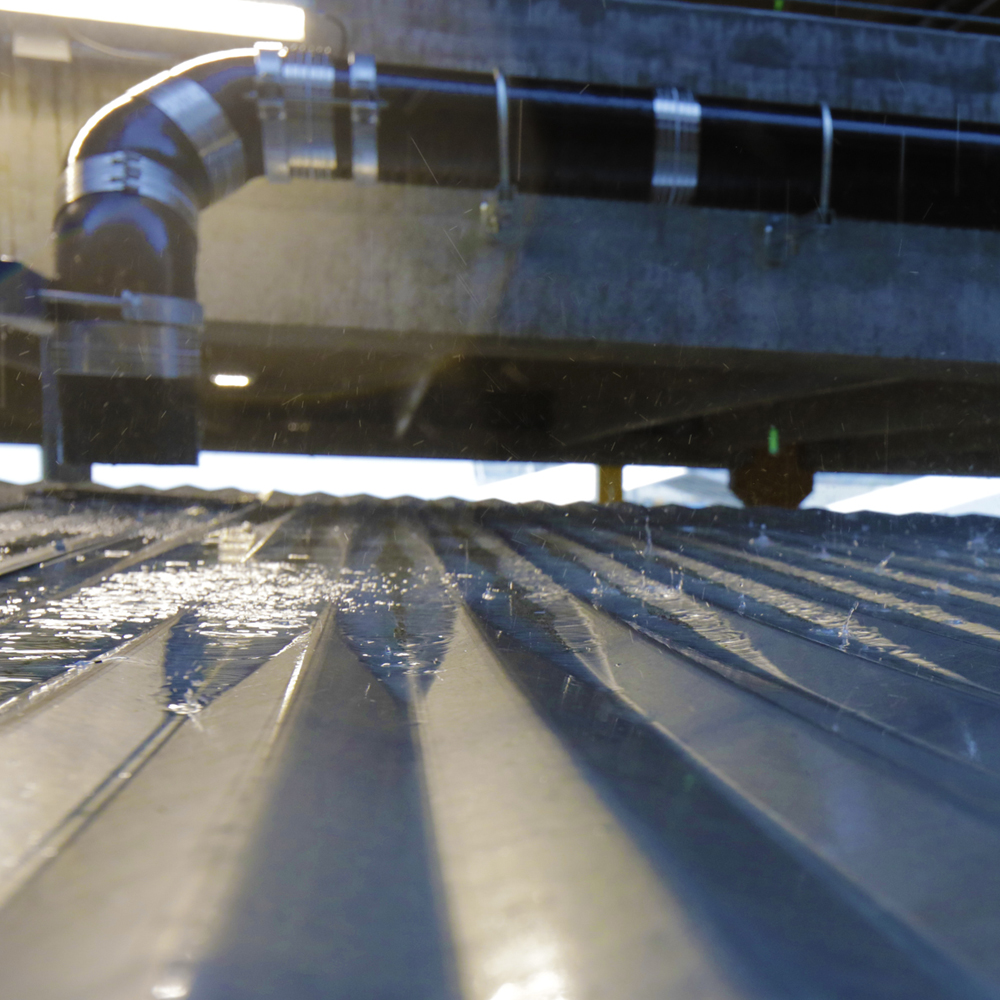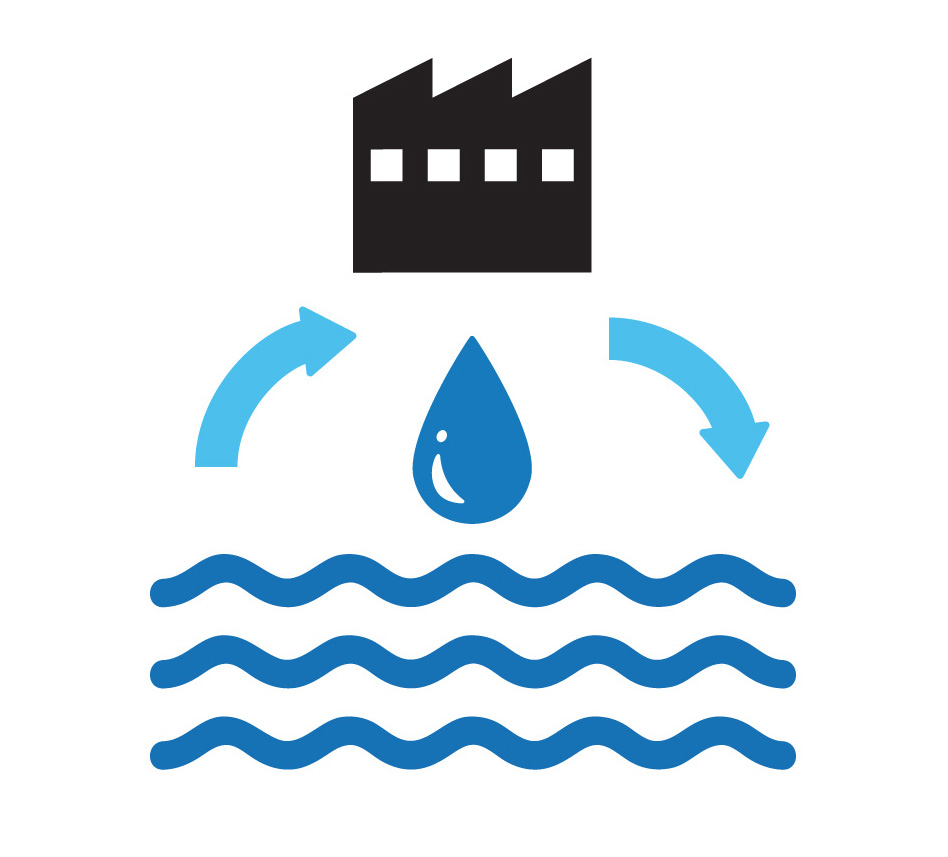TMNA's water stewardship strategy focuses on facilities located in areas of high water stress. We use the World Resources Institute (WRI) Aqueduct™ tool to evaluate water stress. The centerpiece of Aqueduct is the Water Risk Atlas, which combines 13 indicators covering aspects of quantity, quality and reputational risk into a composite overall risk score.
In August 2019, WRI released updated baseline maps for Aqueduct’s water risk framework. The current tool (Version 3.0 of the Water Risk Atlas) includes improvements such as higher temporal and spatial resolution, new indicators, and a more holistic hydrological model.
We re-mapped all our North American locations using the updated tool (102 manufacturing plants, R&D centers, vehicle and parts distribution centers, service training centers and offices) and ranked them based on their overall risk score. According to the Atlas, eight of Toyota‘s North American locations scored in the “high” risk level and two in the “extremely high” risk level.
In fiscal year 2020, these 10 sites represented 6 percent of the water Toyota withdrew in North America. We have prioritized two sites – one of our assembly plants in Mexico and a region office on the West Coast – for piloting water stewardship plans. We will be working with an outside expert over the next year to develop these plans, which will address water conservation (including potentially absolute water reduction targets), water quality, and outreach activities with suppliers and local communities.
TMNA Sites in Water-Stress Areas
This map was generated using data from WRI's Aqueduct™ Water Risk Atlas 3.0. We mapped 102 of Toyota's North American locations, including manufacturing plants, R&D centers, vehicle and parts distribution centers, service training centers and offices. Only the sites in areas of "high" and "extremely high" risk of overall water stress are shown here. Circles with numbers inside indicate multiple facilities of that type; the map is too small to show each site in that area.
CONSERVING WATER
During fiscal year 2020:
- Withdrawal: Toyota withdrew almost 1.77 billion gallons of water at 102 North American facilities, including manufacturing plants, R&D centers, vehicle and parts distribution centers, service training centers and offices. This is a 2.3 percent reduction from fiscal year 2019 levels.
- Withdrawal in Water-Stressed Areas: Only 6 percent of water withdrawal – about 110.8 million gallons – occurred in an area of “high” or “extremely high” water stress, as identified by the Water Risk Atlas.
- Sources of Withdrawal: More than 95 percent of total water withdrawal came from municipal sources (both fresh and recycled water from utilities); the remaining withdrawals came from surface water bodies, groundwater and rainwater.
- Discharge: We estimate 1.17 billion gallons were discharged, either to surface waters or to municipal utilities.
- Consumption: Defined as withdrawal minus discharge, or the water that was not returned to either a municipal utility or surface or ground water. Consumption was 592.36 million gallons.
- Water Recycled/Reused: Our North American manufacturing plants recycled or reused 623 million gallons, which is 35 percent of our total withdrawal. Recycled and reused water includes recycled wastewater and water recycled (instead of rejected) through a reverse osmosis system.
- Water Intensity: Defined as gallons of water withdrawn per vehicle produced. Water intensity was 982 gallons. Water withdrawn includes water used at both production and non-production sites. Despite a 2.3 decrease in production volume, we were able to maintain water intensity at the same level as fiscal year 2019.
Water data for fiscal years 2019 and 2020 can be found in "Water" in Performance.
Examples of water conservation activities included the following:
- Reducing Water Use in the Cooling Tower: Toyota's assembly plant in Mississippi installed an ElectroCell system on the cooling tower water loop. The ElectroCell system uses low voltage electricity to produce electrocoagulation in the cooling tower water. Electrocoagulation is a water treatment technology that causes particles as small as 1 micron to cluster together, improving the effectiveness of the system filters. Combined with electrocoagulation, the filters can remove up to 98 percent of total suspended solids from the cooling tower water. This filtration improvement extends the life of the cooling tower water, resulting in a 25 percent reduction in the use of makeup water. The cleaner water also increases the ability of the water to absorb more heat, which improves the efficiency of chillers and air compressors. This system is expected to reduce the plant’s annual water use by 4.5 million gallons, equivalent to the amount needed to fill 6.8 Olympic-sized swimming pools. Thanks to projects like this one, Toyota Mississippi has the lowest per vehicle water use rate of Toyota’s North American assembly plants.
- Installing Smart Metering Irrigation: At our headquarters campus in Plano, Texas, we are piloting a smart metering irrigation system that uses sensors placed in soil in 200 separate zones. The sensors monitor moisture levels and salinity to determine the optimal duration and frequency of watering in each zone. By the end of fiscal year 2021, the system is expected to achieve an annual reduction in the amount of water used for irrigation by up to 35 percent, or nearly 4.8 million gallons. During the summer of 2020, we were already seeing another benefit, which is that plants appear to be healthier. We are expecting to need fewer plant replacements in the fall.
- Reducing Potable Water Use: Toyota’s new Eastern Canada Parts Distribution Center in Clarington, Ontario, is applying for LEED® certification. The warehouse has a rainwater cistern that collects runoff from the roof for use in toilets and urinals, and is targeting a 50 percent reduction in potable water use compared to a non-LEED building of a similar size. Low-flow plumbing fixtures are expected to save almost 86,600 gallons (327,800 liters) of water per year.
Protecting Water Resources
Water quality is another key component of Toyota's approach to water stewardship. Some of our sites discharge wastewater, which we monitor and treat to meet local, state and federal regulations and to ensure we don't negatively impact water bodies. In fact, Toyota, as part of our enhanced environmental management system, requires all manufacturing sites to operate below wastewater discharge permit limits by an average of 20 percent. There were no unplanned discharges of wastewater that adversely affected water bodies during fiscal year 2020, and no water bodies were adversely affected by Toyota’s wastewater discharges.
RAISING COMMUNITY AWARENESS
Toyota supports community efforts to educate individuals and families about water conservation and the importance of protecting water resources. These activities help scale up conservation efforts and make positive outcomes more impactful.
For the ninth consecutive year, the Wyland Foundation and Toyota presented the National Mayor's Challenge for Water Conservation. The campaign, held in August 2020, encouraged residents across America to make small changes in their lives to better manage our water resources and improve the health of our oceans, lakes, rivers, streams and wetlands. For more information on this event, see "National Mayor‘s Challenge for Water Conservation."
Through its inaugural Drive4Five Campaign, Toyota awarded an impact grant to the Huron River Watershed Council (HRWC) to offer environmental science, technology, engineering and math (STEM) programming through place-based, hands-on learning.
During the 2019-2020 school year, over 1,000 students in grades 4 through 12 from a dozen different schools, mostly in the Ann Arbor and Ypsilanti school districts in Michigan, participated in HRWC’s Streamside Education Program, a series of stream ecology lessons customized by grade level and teacher input. Students studied the physical characteristics of the streambed and banks, taking precise measurements such as water flow, temperature, conductivity and turbidity. Students also learned how to collect and identify aquatic benthic macroinvertebrates, identified what the organisms reveal about stream health, and studied how their physical adaptations allow them to live in dynamic water systems.
Field trips to the watershed were combined with cleanup events to reinforce the importance of volunteering in protecting the Huron River watershed. For National Public Lands Day in 2019, 50 Toyota team members and family members collected more than 80 pounds of trash from the Huron River near the Gallup Park Livery.
We hope to continue this program in the 2020-2021 school year, but will be flexible as the situation related to the COVID-19 pandemic continues to evolve.

Students from Huron High School in Ann Arbor, Michigan, participated in a Huron River watershed cleanup event as part of HRWC’s Streamside Education Program.

